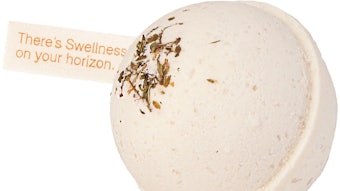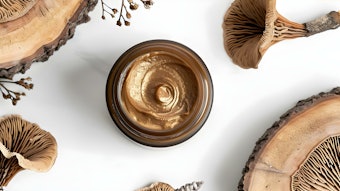Yoga’s power to transform the body—and one’s life—is what draws many to the practice. With any process of rebuilding, raw materials are required. And, in the case of the body, that means the proper food.
Just as you wouldn’t build an ashram out of random trash, attention to nutrient function—not just taste—should inform your approach to rebuilding the temple of your body. That’s because the kinds of food you choose can greatly affect energy levels, recovery time, and the health of muscles, joints and bones being reconditioned.
Based on research conducted and reviewed at the Dole Nutrition Institute, as well as many years of my own yoga practice, here is a list of top food sources that can help speed healing, ease soreness, promote joint health and otherwise support your body as it reaps the benefits of yoga.
Support healthy joints
A joint is where two bones make contact, or articulate. Maintaining the joints can allow for better movement and mechanical support of the bones.
Broccoli. Cruciferous vegetables, or edible plants from the Brassicaceae family, contain sulforaphane—a compound that triggers the body’s own antioxidant defenses. New research suggests that this process may block cyclooxygenase (COX-2) enzymes that cause inflammation. Broccoli sprouts are one of the most potent sources of these indirect antioxidants, which also can be found in cabbage, cauliflower and Brussels sprouts.
Cherries. These juicy fruits are a top source of anthocyanins that may help to reduce inflammation and possibly lower blood levels of uric acid, which can accumulate in joints and cause pain associated with a form of arthritis called gout.
Pineapple. This fruit is the only natural source of bromelain—a proteolytic enzyme that functions as a “cleanup crew,” digesting dead protein cells in case of injury and microtears that are part of the muscle-building process. Research suggests that bromelain found in pineapple can help reduce inflammation and relieve muscle soreness. Scientists at the Dole Nutrition Institute found that fresh or frozen pineapple contains as much, if not more, bromelain activity than supplements do. Pineapples also provide an excellent source of vitamin C, which helps promote collagen formation and improve iron absorption, as well as manganese, which supports metabolism and bone density.
Spring back from sprains
Sprains occur when the ligaments are overstretched or slightly torn. Pain, swelling and loss of function are symptoms caused by the injury and require time to heal, depending upon the severity of the sprain.
Black cod. Move over salmon—black cod has even higher levels of omega-3 fatty acids, which may help to reduce inflammation. Flounder, halibut and sardines also contain this healthy fat, as do flaxseed oil, walnuts, tofu and leafy green vegetables.
Red bell pepper. Just one contains more than 470% of your daily vitamin C needs, compared to yellow, which contains 450%, and green, with 190%. Vitamin C can help to speed recovery from minor sprains by spurring collagen synthesis. According to a Boston University study, people who consumed less than 150 mg daily of vitamin C had faster cartilage breakdown. Other top sources include citrus fruit, pineapple, kiwi, cantaloupe, papaya, strawberries, tomatoes, kale, collard greens and sweet potatoes.
Build a better backbone
The spine supports the body, maintains posture and protects the spinal cord. Injuries to this area can cause a loss of feeling in certain parts of the body that may be temporary or permanent.
Button mushrooms. This fungus is an unexpected source of vitamin D, adequate levels of which help support joint health. The mechanism that occurs may be greater absorption of calcium. Sunshine also enables the body to produce vitamin D, while other top sources include oysters, sardines and fortified nonfat dairy.
Kale. There’s more to strengthening your spine than the yoga moves Cobra and Camel. Kale is one of the healthier sources of calcium, which helps to protect against bone loss. One serving—or 1 cup—of cooked kale provides nearly 1,000% of adequate intake for vitamin K, which enhances the mineral-binding capacity of bone proteins.
Minimizing muscle pain
Muscle pain, or myalgia, occurs when muscles are overstretched, and can slow a fitness regimen. Maintaining good muscle health protects the body from weakness and improves fitness.
Bananas. The complex carbohydrates contained in bananas are a healthy source of lasting energy, but the very energy they supply may cause you to push too hard. Potassium also can help to ward off muscle cramps; it is one of the electrolytes that enable muscles to contract and relax. Calcium, magnesium and phosphorus also aid in the movement of muscles. Potatoes, broccoli and kiwi are other healthy potassium sources.
Oats. This nutritious type of whole grain contains zinc that supports cell repair, manganese for collagen formation, copper required for cross-linking collagen and protein to relieve soreness.
Tea. Green and black teas contain flavonoids—antioxidant compounds that may block the production of prostaglandins, which cause inflammation and pain.
White beans. In addition to supplying nearly half of your potassium needs for the day, white beans are a nutritious vegetable source of protein, which is important in rebuilding muscle and supporting the collagen synthesis involved in healing.
Avoid the bad
There’s only one thing that rivals the importance of choosing the right foods for providing a proper foundation for the practice of yoga, and that’s avoiding the wrong foods. Although some people believe that all foods can fit into a healthful eating style, I disagree. What you consume matters. If it didn’t, there would be no need for warning labels on cleaning solutions. If ingesting these chemicals can harm the body, it should come as no surprise that ingesting synthetically derived foods can clog your arteries.
Although yogic values advocate nonjudgment and moderation, here’s a little dietary tough love that will have your body loving you back. Pass up the pork rinds, and limit the red meat. Diets that are high in animal fats are linked to an increased risk of colon cancer and as much as a 33% greater risk of breast cancer. Plus, saturated fat clogging the arteries won’t help your circulation when demanding yoga postures require optimum blood flow.
The same goes for high-sodium dinners and trans fat-filled treats. By increasing blood pressure and decreasing high-density lipoproteins (HDL), or good cholesterol, sodium and trans fat undermine the two gifts that regular exercise, such as yoga, gives the body: lower blood pressure and higher HDL.
Finally, remember that a healthy human body is composed of more than 50% water, so limit caffeinated drinks that increase dehydration, while keeping the water bottle nearby. However, in the practice of Bikram—an especially rigorous form of yoga practiced in a heated room to warm the body—reach for it only during designated water breaks, or instructor reprimands may increase your levels of the stress hormone cortisol.
Eat for life
Rebuild your body and reach your full potential by eating the right balance of healthy yoga foods. With the proper diet and diligent practice, your muscles, joints, bones—and taste buds—will respect how you have cared for and unified them.










